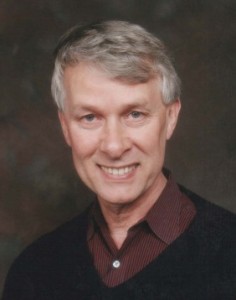Beautiful Minds: 12 Nobel winners at Astana Economic Forum
A 12th Nobel Prize winner is attending the Fifth Astana Economic Forum that opened Monday.
Organizers of the three-day Forum from May 22 to 24 announced a few weeks ago that 11 Nobel laureates would be coming. Another invitee accepted after the announcement.
Seven of the 12 Nobel laureates at this year’s Forum won their prizes in economics and three in chemistry. One laureate won in physics and another in medicine.
The lineup of the prize winners includes Gell-Mann Murray, the American physicist who discovered the subatomic particle known as the quark; Robert Mundell, the Canadian economist who wants the world’s currency system revamped; and John Nash, the mathematical genius whom actor Russell Crowe portrayed in the movie “A Beautiful Mind.”
Here are thumbnail sketches of the 12:
Economics winners
 Robert Aumann – The Hebrew University professor shared a Nobel Prize in 2005 with Thomas Schelling for game-theory analysis in cooperation and conflict. One of the themes in the lecture that the Israeli scholar gave when he accepted the Nobel Prize was: “War is not irrational, but must be scientifically studied in order to be understood, and eventually conquered.”
Robert Aumann – The Hebrew University professor shared a Nobel Prize in 2005 with Thomas Schelling for game-theory analysis in cooperation and conflict. One of the themes in the lecture that the Israeli scholar gave when he accepted the Nobel Prize was: “War is not irrational, but must be scientifically studied in order to be understood, and eventually conquered.”
Finn Kydland and Edward Prescott – The two scholars shared a Nobel Prize in 2004 while at Carnegie Mellon University for their research on the relationship between time and economic policy. Kydland, a native of Norway who has also delved into labor economics, is now a professor at the University of California at Santa Barbara. Prescott, an American, is now a professor at Arizona State University.
 Christopher Pissarides – The London School of Economics professor shared a Nobel Prize in 2010 with Peter Diamond and Dale Mortensen for work in search friction. The term refers to periods when workers are between jobs, looking for their next positions. Search theory tries to determine the optimal strategy that a person should employ when choosing from among potential opportunities. Pissarides is a native of Cyprus.
Christopher Pissarides – The London School of Economics professor shared a Nobel Prize in 2010 with Peter Diamond and Dale Mortensen for work in search friction. The term refers to periods when workers are between jobs, looking for their next positions. Search theory tries to determine the optimal strategy that a person should employ when choosing from among potential opportunities. Pissarides is a native of Cyprus.
Eric Maskin – The scholar at the Institute for Advanced Studies in Princeton, New Jersey, shared a Nobel Prize in 2007 with Leonid Hurwicz and Roger Myerson for laying the foundations of mechanism design theory. A key underpinning of mechanism design theory is the notion that a game designer creates rules that prompt others to act the way he wants them to. The work has applications in politics as well as economics.
Robert Mundell – The Columbia University professor won a Nobel Prize in 1999 for his work in monetary dynamics and in optimum currency areas – regions where it would make sense to have a single currency. His research played a key role in the European Union introducing the euro. Mundell, a Canadian, also is known for helping to start the supply-side economic movement.
 John Nash – The Princeton University scholar received a Nobel Prize in 1994 for his research in game theory. The American’s contributions to game theory, differential geometry and partial differential equations have given the world a better understanding of chance and complex systems. His work is used in economics and a variety of other fields.
John Nash – The Princeton University scholar received a Nobel Prize in 1994 for his research in game theory. The American’s contributions to game theory, differential geometry and partial differential equations have given the world a better understanding of chance and complex systems. His work is used in economics and a variety of other fields.
Chemistry winners
Roger Kornberg – The Stanford University School of Medicine scholar won a Nobel Prize in 2006 for his genetics research. Three major macromolecules are essential for life – DNA, RNA and proteins. Kornberg increased our understanding of the process through which genetic information in DNA is copied to RNA. His late father, Arthur, also a Stanford professor, shared a Nobel Prize in 1959 with Severo Ochoa for pioneering work in understanding DNA.
Kary Banks Mullis – The American researcher shared a Nobel Prize with Michael Smith in 1993 for a breakthrough in the way a DNA sequence is copied. The polymerase-chain-reaction technique that Mullis developed while at Cetus Corporation in California in the 1980s can generate millions of copies of a DNA sequence. The research led to revolutions in biochemistry, molecular biology, genetics, medicine and forensics.
Ada Yonath – The professor at the Weizmann Institute of Science in Rehovot, Israel, shared a Nobel Prize with Venkatraman Ramakrishman and Thomas Steitz in 2009 for work on the structure and function of the ribosome. The ribosome is a substance in the body that transforms the genetic material RNA into protein. Ribosome work has applications in antibiotics and other fields.
Physics winner
Gell-Mann Murray – The American researcher won a Nobel Prize in 1968 for his research on the theory of subatomic particles and his discovery of the quark. There are many more subatomic particles than the protons, electrons and neutrons that we studay as school children – and Murray has done research on them. Quarks combine to form particles called hadrons, the most stable of which are protons and neutrons. Murray holds professor positions simultaneously at the California Institute of Technology, the University of Southern California and the University of New Mexico.
Medicine winner
 Sir Richard John Roberts – The professor at the University of Sheffield in England shared a Nobel Prize with Phillip Allen Sharp in 1993 for genetics research, including gene-splicing.
Sir Richard John Roberts – The professor at the University of Sheffield in England shared a Nobel Prize with Phillip Allen Sharp in 1993 for genetics research, including gene-splicing.
The two discovered a substance known as intron inside a gene that can be removed by gene-splicing. One important application of gene-splicing is producing vaccines.
Read about the conference here.
(Feature photo: Publicity photo from the film A Beautiful Mind)
(Hal Foster appears in the Baltimore Post-Examiner under a partnership with Tengrinews of Kazakhstan. )

Hal Foster is a longtime journalist and journalism professor who has worked in the United States, Japan, Ukraine and Kazakhstan. His news career has included writing and editing at the Los Angeles Times and nine years as a journalist in Japan. He is an associate professor of Communication at the new Nazarbayev University in Astana, Kazakhstan. Catch one of his other blogs at en.tengrinews.kz.

